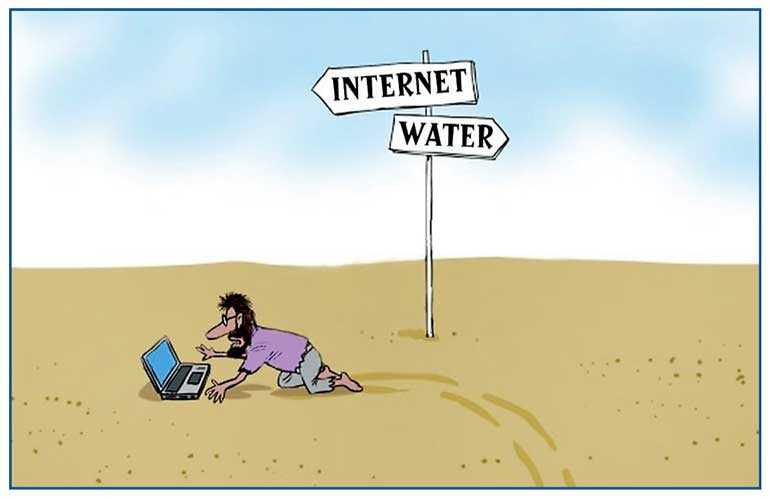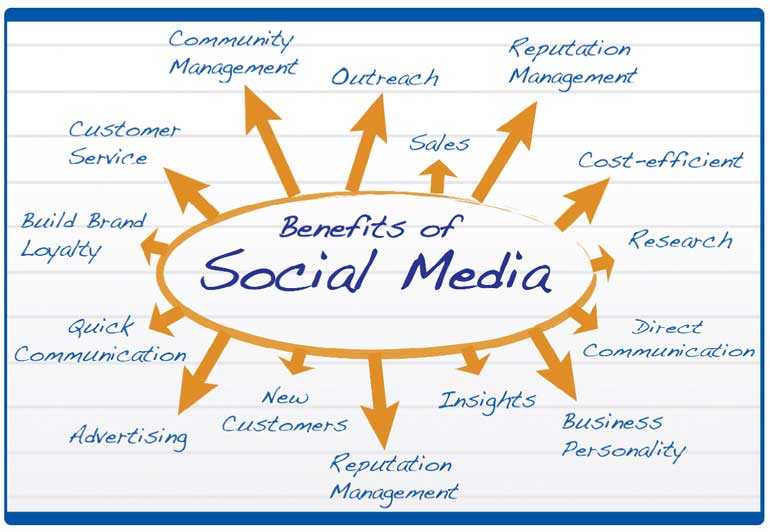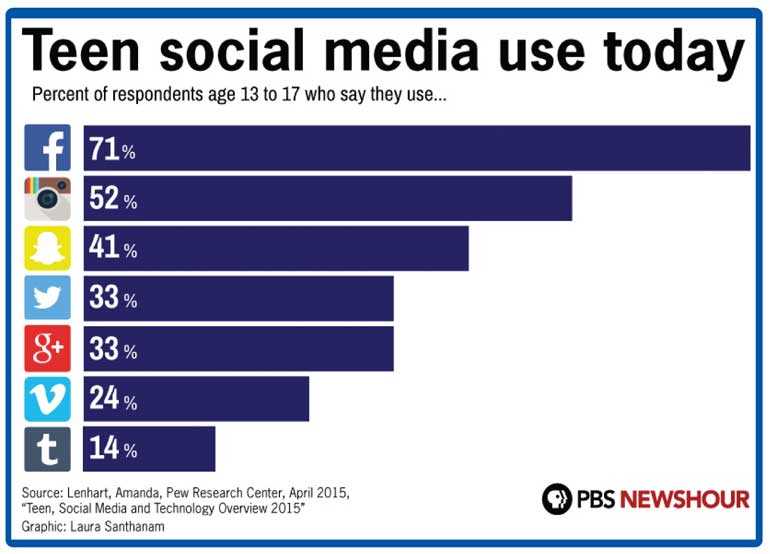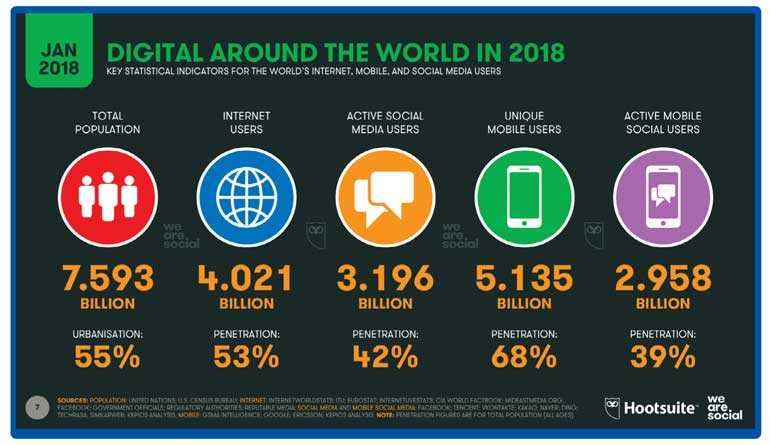Monday Apr 07, 2025
Monday Apr 07, 2025
Thursday, 11 October 2018 00:00 - - {{hitsCtrl.values.hits}}

An inquiry into whether social media is boon or bane
I start with two confessions – firstly, I am no hero, in fact I am still but a victim who has hope of overcoming the said syndrome; on the other hand I have reaped the benefits of social media and the rapid ripple effect it can offer. Secondly, everything I present to you has been said before – if it is your desire to learn more about it, it is at your fingertips, waiting.
In my independent research to prepare for a workshop on social media addiction, I decided the topic needs to be taken to a larger audience and be read by intelligent parents, leaders of tomorrows generation, and, if they are receptive, the targets themselves. If you interact in the realm of social media, the concept of dopamine is something you would have encountered. Sadly it is also included in the jargon of cocaine addicts. Imagine that! Now that I’ve got your attention let’s dive into it.
Concept of dopamine rushes and instant gratification
Dopamine goes hand-in-glove with instant gratification. Dopamine is a neurochemical created in various parts of the brain and is critical in all sorts of brain functions, including thinking, moving, sleeping, mood, attention, motivation, seeking and reward. Dopamine causes one to want, desire, seek out, and search. It increases your general level of arousal and your goal-directed behaviour. Therefore, because dopamine gives us the desire to seek and be rewarded, this is where the issue of instant gratification comes in.
Thanks to FB, Twitter, and Instagram, the desire to seek instant gratification is available at the click of a button. Thus it gives users a false sense of fulfilment. An example of this is the highly talked about issue with young professionals today in the workplace who crave the gratification of a pay raise or promotion without patience. When they don’t see the results, the rewards, they become frustrated and at times quit their jobs, thus getting them nowhere on the success ladder.
These days only a few people are actually striving to achieve their goals and becoming successful. We live in an era that individuals have become slaves to technology. Instead, we aim to create an environment that enables the target audience to thrive using the same tools that are posing a tremendous threat to their mental wellbeing.

What the architects of social media have to say
A former Facebook executive is making waves after he spoke out about his “tremendous guilt” over growing the social network, which he feels has eroded “the core foundations of how people behave by and between each other.”
Chamath Palihapitiya began working for Facebook in 2007 and left in 2011 as its vice president for user growth. When he started, he said, there was not much thought given to the long-term negative consequences of developing such a platform. “I think in the back, deep, deep recesses of our minds, we kind of knew something bad could happen,” says Palihapitiya. “But I think the way we defined it was not like this.”
That changed as Facebook’s popularity exploded, he said. To date, the social network has more than two billion monthly users around the world and continues to grow. But the ability to connect and share information so quickly — as well as the instant gratification people give and receive over their posts — has resulted in some negative consequences, according to Palihapitiya.
“It literally is a point now where I think we have created tools that are ripping apart the social fabric of how society works. That is truly where we are,” he said. “The short-term, dopamine-driven feedback loops that we have created are destroying how society works: no civil discourse, no cooperation, misinformation, mistruth. And it’s not an American problem. This is not about Russian ads. This is a global problem.”
Facebook has pushed back on the former executive’s comments, saying in a statement that Palihapitiya has not worked there for more than six years and that it was “a very different company back then”.
(Source: The Washington Post)
Silicon Valley keen to exploit brain chemical credited with keeping us tapping on apps and social media
The capacity for ‘persuasive technology’ to influence behaviour is only just becoming understood. In an unprecedented attack of candour, Sean Parker, the 38-year-old Founding President of Facebook, recently admitted that the social network was founded not to unite us, but to distract us. “The thought process was: ‘How do we consume as much of your time and conscious attention as possible?’” he said.
To achieve this goal, Facebook’s architects exploited a “vulnerability in human psychology” explained Parker, who resigned from the company in 2005. Whenever someone likes or comments on a post or photograph, he said, “we… give you a little dopamine hit”. Facebook is an empire of empires, then, built upon a molecule.
What is dopamine?
Dopamine, discovered in 1957, is one of 20 or so major neurotransmitters, a fleet of chemicals that, like bicycle couriers weaving through traffic, carry urgent messages between neurons, nerves and other cells in the body. These neurotransmitters ensure our hearts keep beating, our lungs keep breathing and, in dopamine’s case, that we know to get a glass of water when we feel thirsty, or attempt to procreate so that our genes may survive our death.
In the 1950s, dopamine was thought to be largely associated with physical movement after a study showed that Parkinsonism (a group of neurological disorders whose symptoms include tremors, slow movement and stiffness) was caused by dopamine deficiency. In the 1980s, that assumption changed following a series of experiments on rats by Wolfram Schultz, now a professor of neuroscience at Cambridge University, which showed that, inside the midbrain, dopamine relates to the reward we receive for an action. Dopamine, it seemed, was to do with desire, ambition, addiction and sex drive.
Schultz and his fellow researchers placed pieces of apple behind a screen and immediately saw a major dopamine response when the rat bit into the food. This dopamine process, which is common in all insects and mammals, is, Schultz says, at the basis of learning: it anticipates a reward to an action and, if the reward is met, enables the behaviour to become a habit, or, if there’s a discrepancy, to be adapted. (That dishwasher tablet might look like a delicious sweet, but the first fizzing bite will also be the last.) Whether dopamine produces a pleasurable sensation is unclear, says Schultz. But this has not dented its reputation as the miracle bestower of happiness. We are abusing a useful and necessary system. We shouldn’t do it, even though we can.
Dopamine inspires us to take actions to meet our needs and desires – anything from turning up the heating to satisfying a craving to spin a roulette wheel – by anticipating how we will feel after they’re met. Pinterest, the online scrapbook where users upload inspirational pictures, contains endless galleries of dopamine tattoos (the chemical symbol contains two outstretched arms of hydroxide, and a three-segmented tail), while Amazon’s virtual shelves sag under the weight of diet books intended to increase dopamine levels and improve mental health.
“We found a signal in the brain that explains our most profound behaviours, in which every one of us is engaged constantly,” says Shultz. “I can see why the public has become interested.”
In this way, unlike its obscure co-workers norepinephrine and asparagine, dopamine has become a celebrity molecule. The British clinical psychologist Vaughan Bell once described dopamine as “the Kim Kardashian of molecules”. In the tabloid press, dopamine has become the transmitter for hyperbole. “Are cupcakes as addictive as cocaine?” ran one headline in the Sun, citing a study that showed dopamine was released in the orbital frontal cortex – “the same section activated when cocaine addicts are shown a bag of the class A drug” – when participants were shown pictures of their favourite foods. Still, nowhere is dopamine more routinely name-dropped than in Silicon Valley, where it is hailed as the secret sauce that makes an app, game or social platform “sticky” – the investor term for “potentially profitable”.
“Even a year or two before the scene about persuasive tech grew up, dopamine was a molecule that had a certain edge and sexiness to it in the cultural zeitgeist,” explains Ramsay Brown, the 28-year-old cofounder of Dopamine Labs, a controversial California startup that promises to significantly increase the rate at which people use any running, diet or game app. “It is the sex, drugs and rock’n’roll molecule. While there are many important and fascinating questions that sit at the base of this molecule, when you say ‘dopamine’, people’s ears prick up in a way they don’t when you say ‘encephalin’ or ‘glutamate’. It’s the known fun transmitter.”
Fun, perhaps, but as with Kardashian, dopamine’s press is not entirely favourable. In a 2017 article titled ‘How evil is tech?’ the New York Times columnist David Brooks wrote: “Tech companies understand what causes dopamine surges in the brain and they lace their products with ‘hijacking techniques’ that lure us in and create ‘compulsion loops’.”
Most social media sites create irregularly timed rewards, Brooks wrote, a technique long employed by the makers of slot machines, based on the work of the American psychologist BF Skinner, who found that the strongest way to reinforce a learned behaviour in rats is to reward it on a random schedule.
“When a gambler feels favoured by luck, dopamine is released,” says Natasha Schüll, a professor at New York University and author of ‘Addiction by Design: Machine Gambling in Las Vegas’. This is the secret to Facebook’s era-defining success: we compulsively check the site because we never know when the delicious ting of social affirmation may sound.
Randomness is at the heart of Dopamine Labs’ service, a system that can be implemented into any app designed to build habitual behaviour. In a running app, for example, this means only issuing encouragement – a high-five badge, or a shower of digital confetti – at random intervals, rather than every time the user completes a run. “When you finish a run, the app communicates with our system and asks whether it would be surprising to him if we congratulated him a little more enthusiastically,” explains Brown. Dopamine Labs’ proprietary AI uses machine learning to tailor the schedule of rewards to an individual. “It might say: actually, right now he’d see it coming, so don’t give it to him now. Or it might say: GO!”
While the sell seems preposterously flimsy (with a slot machine, for example, at least the random reward is money, a much more compelling prize than any digital badge), Brown says that the running app company has seen significant positive results. “If you do this properly, we see an average 30% improvement in the frequency of how often a person goes for a run.”
Dopamine Labs, which currently has 10 clients, has seen similar positive results with many other kinds of app. In one dieting service, which encourages people to track the food they eat, the company saw an 11% increase in food-tracking after integrating Dopamine Labs’ system. A microloan service saw a 14% improvement in how frequently people would pay back their loans on time or early. “An anti-cyberbullying app saw a 167% improvement in how often young people sent encouraging messages to one another by controlling when and how often and when we sent them an animated gif reward,” claims Brown.
The capacity for so-called “persuasive technology” to influence behaviour in this way is only just becoming understood, but the power of the dopamine system to alter habits is already familiar to drug addicts and smokers. Every habit-forming drug, from amphetamines to cocaine, from nicotine to alcohol, affects the dopamine system by dispersing many times more dopamine than usual. The use of these drugs overruns the neural pathways connecting the reward circuit to the prefrontal cortex, which helps people to tame impulses. The more an addict uses a drug, the harder it becomes to stop.

“These unnaturally large rewards are not filtered in the brain – they go directly into the brain and overstimulate, which can generate addiction,” explains Shultz. “When that happens, we lose our willpower. Evolution has not prepared our brains for these drugs, so they become overwhelmed and screwed up. We are abusing a useful and necessary system. We shouldn’t do it, even though we can.” Dopamine’s power to negatively affect a life can be seen vividly in the effects of some Parkinson’s drugs, which, in flooding the brain with dopamine, have been shown to turn close to 10% of patients into gambling addicts.
Brown and his colleagues are aware that they’re playing with fire and claim to have developed a robust ethical framework for the kinds of companies and app-makers with which they will work. “We spend time with them, understand what they’re building and why,” he says. “The ethics test looks something like: should this work in this app? Should this change human behaviours? Does this app encourage human flourishing? If not, does it at least not make the human condition shittier?” To date, Brown claims that Dopamine Labs has turned down both betting companies and free-to-play video game developers, who wanted to use the company’s services to form habits in their players.
Well-intentioned strategies often produce unintended consequences. “I don’t know whether [these apps] can generate addiction,” says Schultz, who, along with two other researchers, was awarded Denmark’s €1m Brain prize in 2017 for discovering dopamine’s effects. “But the idea behind behavioural economics, that we can change the behaviour of others not via drugs or hitting them on the head, but by putting them into particular situations, is controversial. We are telling other people what is good for them, which carries risks. Training people via systems to release dopamine for certain actions could even cause situations where people can’t then get away from the system. I’m not saying technology companies are doing bad things. They may be helping. But I would be careful.”
For Brown, however, co-opting these systems to produce positive effects is the safest and most logical way in which to evolve the human mind, and use a natural molecule to form intentional, positive habits. “We can close the gap between aspiration and behaviour and build systems that enrich the human condition and encourage human flourishing,” he says. “Our product is a slot machine that plays you.”
(Source: Guardian)
Is the tool any good?
Before I condemn all social media – I must warn everyone of one glaring obligation which is a legal one: the same rules applicable to defamation applies to your posts. This is something we are happy to disregard but one’s virtual life has equal ramification as do their real lives so be aware.
Having said that I cannot deny that social media is a tool I have used to champion causes and raise awareness for charity projects to great success. It a tool that can help one connect, reconnect, stay in touch and in some cases make money as well. Social media celebrities are plenty.
However, my intention here is to obtain some air play for the negatives of social media which doesn’t receive as much publicity and my earnest hope is that you take the lessons applicable to you. Wishing you a more interesting real life than a virtual one.

8 tips to fight information overload
Stop the signs – feel alone even as you communicate with people all day? That is a signal that technology is dominating your life.
Take baby steps – try being inaccessible for short spurts to see what happens. The world probably won’t implode.
Repeat these four words – I have a choice. People who say “My boss wants me to be reachable after 8 p.m.” are likely exaggerating the controls others have over them.
Set limits – Rein in office emails and instant message traffic.
Give clear instructions – Try an email signature “I answer email at 10 a.m., 1 p.m. and 4 p.m. If you need a quicker response, please call”.
Make a tasks list – if you are interrupted you will get back to work faster if you have a list of what needs to be done.
Stick to a schedule – handle recreational web surfing and emails at set times.
Do a reality check – after five minutes of unplanned surfing, ask yourself, “Should I really be doing this now?”
(Source: Readers Digest)
(The author is an Attorney-at-Law and can be reached on [email protected].)
Discover Kapruka, the leading online shopping platform in Sri Lanka, where you can conveniently send Gifts and Flowers to your loved ones for any event including Valentine ’s Day. Explore a wide range of popular Shopping Categories on Kapruka, including Toys, Groceries, Electronics, Birthday Cakes, Fruits, Chocolates, Flower Bouquets, Clothing, Watches, Lingerie, Gift Sets and Jewellery. Also if you’re interested in selling with Kapruka, Partner Central by Kapruka is the best solution to start with. Moreover, through Kapruka Global Shop, you can also enjoy the convenience of purchasing products from renowned platforms like Amazon and eBay and have them delivered to Sri Lanka.
Discover Kapruka, the leading online shopping platform in Sri Lanka, where you can conveniently send Gifts and Flowers to your loved ones for any event including Valentine ’s Day. Explore a wide range of popular Shopping Categories on Kapruka, including Toys, Groceries, Electronics, Birthday Cakes, Fruits, Chocolates, Flower Bouquets, Clothing, Watches, Lingerie, Gift Sets and Jewellery. Also if you’re interested in selling with Kapruka, Partner Central by Kapruka is the best solution to start with. Moreover, through Kapruka Global Shop, you can also enjoy the convenience of purchasing products from renowned platforms like Amazon and eBay and have them delivered to Sri Lanka.